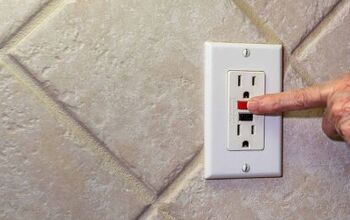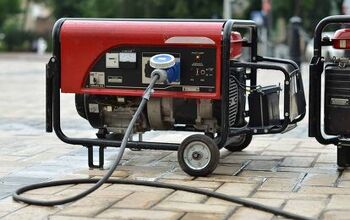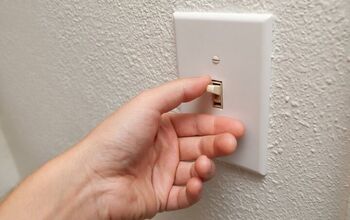Tamper-Resistant Outlet Can't Plug-In: Possible Solutions

Tamper-resistant outlets are the new standard when it comes to outlet safety in homes and businesses. Modern building codes require that you install tamper-resistant outlets because of how much safer they are than standard outlets. With that said, it can be difficult to plug an electrical device into a tamper-resistant outlet, and that can be frustrating.
It can be hard to plug an electrical device into a tamper-resistant outlet if something is blocking the opening. Shut off power to the outlet, inspect the opening, and remove debris from it if something is blocking it. Otherwise, you can remove the outlet, widen the opening with a screwdriver, and try to plug it back into it.
Never try to modify or widen a tamper-resistant outlet if you struggle to plug in. You can shock yourself, damage the outlet, and affect your home’s wiring. Follow along as we explore why you can’t plug into your tamper-resistant outlet and see how we can help you.
Do You Need to Hire an Electrician?
Get free, zero-commitment quotes from pro contractors near you.

Tamper Resistant Outlet Can’t Plug-In
Modern tamper-resistant outlets are difficult to plug into because they won’t open. Their new design exists to make the outlet as safe for children as possible and prevent tampering. They allow you to plug in a two-pronged electrical plug, but that is as far as you can get.
If you have a three-bladed plug, you will need to plug it into a converter before you can plug it into a tamper-resistant outlet. You may have difficulty plugging into a tamper-resistant outlet if something is blocking the opening. This can occur if there is dust or debris in the way, and you can carefully clear it away to plug into the outlet.
Tamper-resistant outlets have a bad reputation amongst electricians because they are difficult to work with. Calls about tamper-resistant outlets make up a big part of their service jobs these days, and it can be frustrating.
How to Open Tamper Resistant Outlets
Over time, tamper-resistant outlets become looser and easier to work with. However, it can be frustrating to wait it out until your tamper-resistant outlet is usable, and not every homeowner is willing to do so. Luckily, you can open a tamper-resistant outlet with something as simple as a screwdriver.
Never touch an active outlet with a screwdriver or it can shock you and it may be fatal. However, it is safe to work with an outlet and use a screwdriver if it is detached from the wall and has no electrical connection. Widen the openings with a screwdriver so that plug blades can easily fit into them.
Test out the outlet before you reinstall it so that you can see if it fits. Continue to widen the openings until they can fit a two-bladed plug. Reinstall the outlet and test it again to make sure that the plug and outlet work.
Alternatives
Low-quality tamper-resistant outlets aren’t worth the money, even if they are required. Luckily, however, you aren’t limited to one brand and there are many options on the market. They rarely cost more than $15, and some tamper-resistant outlets are better than others.
Quality brands such as Leviton from The Home Depot feature back and side wiring terminals that are easier to install. Brands like Legrand, have a high-impact resistant thermoplastic construction and you can find it at Lowe’s. The Hubble is another excellent option, and it features a unique shutter design that makes them even safer than standard tamper-resistant outlets.
Options that provide tremendous additions at little cost are your best bet when dealing with electricity, convenience, and safety. Always research a tamper-resistant outlet before you install it to make sure that it is certified and safe to use. Otherwise, you might as well use an out-of-date and unregulated old outlet because it would be just as dangerous.
Look For Damage
Tamper-resistant outlets can only work properly under the right conditions. You can ruin a tamper-resistant outlet if you use excessive force. If you are having trouble plugging in, it is quite possible that the plug, not the receptacle, is damaged.
Inspect the blades to make sure that you didn’t bend them, and straighten them out by hand if possible. Doing so will allow each prawn to contact each shutter again and make an entrance simultaneously.
Another possible issue is a permanently damaged plug. The damage can either have a crack on the metal prawn or perhaps the blade is broken off and is exposing a sharp edge. In this instance, the plug will never insert itself through the shutters and needs replacement.
Don’t force a plug if the outlet isn’t responsive or you may cause more damage. You could ruin the electrical device that you’re trying to plug in, and you will likely damage the outlet further.
Regulations
Due to the safety features, new building codes now enforce tamper-resistant outlets for safety. Electrical accidents are common in households for children and adults, so these regulations should exist. As the name suggests, tamper-resistant outlets make it so that you can’t tamper with them
Not many people are familiar with electrical currents and their behavioral nature. Adults should always implement tamper-resistant outlets in their home or work area if they have the option. Businesses must have tamper-resistant outlets, and it is ideal to upgrade to them in your home.
This is especially true if you have children, and it’s not worth the risk that they could get injured with a standard outlet. The average cost of a tamper-resistant outlet is $8, and it’s worth the cost to comply with new building codes.
Do You Need to Hire an Electrician?
Get free, zero-commitment quotes from pro contractors near you.

Related Questions
Are tamper-resistant outlets required?
Tamper-resistant outlets are required and you must have them to comply with building codes. They exist to protect homeowners and children so that nobody can insert an object into the outlet and get harmed. Electrical shocks are often fatal and tamper-resistant outlets exist to reduce the risk of electrical shock and injury.
Do tamper-resistant outlets need covers?
You still need a cover if you have a baby because tamper-resistant outlets are not babyproof. They can reduce the risk of harm for adults and children, but tamper-resistant outlets are not safe for a baby and you still need a cover. However, tamper-resistant outlets are still safer than outdated outlets, but you still need to attach a baby-safe cover to them.
How do I know if an outlet is tamper-resistant?
Inspect an outlet’s receptacle and look for the marking “TR” which indicates that it is a tamper-resistant outlet. There is a shutter within tamper-resistant outlets that won’t give in unless you plug a device into them. The shutter makes it so that you cannot accidentally touch the outlet and get shocked, harmed, or even die.
Are tamper-resistant plugs worth it?
Tamper-resistant plugs are worth it for your safety, and local building codes require them. Homeowners have been required to use tamper-resistant outlets since 2008, and you can fail an electrical inspection if you don’t have them. Tamper-resistant plugs reduce injuries, particularly for children who are alone in a home or unattended in a room.
Summing It Up
Tamper-resistant outlets are the new standard and are required by code, but they aren’t always easy to use. It is difficult to plug an appliance into a tamper-resistant plug if something is caught between the shutter and the opening. Debris, fuzz, and dust can also block the opening of a tamper-resistant outlet and make it difficult to plug an electrical device into it.
You must still use a cover if you have a baby because tamper-resistant outlets are not baby safe and still pose a risk. However, tamper-resistant outlets are safe for children and the shutter prevents an electrical connection unless plug a device into the receptacle. It is possible to widen the opening on a tamper-resistant outlet, but you cannot do it if it has an electrical connection.
Shut off the power to the outlet, remove it, and widen the opening with a flathead screwdriver. This will allow you to easily fit a two-pronged plug into the outlet.

We are a team of passionate homeowners, home improvement pros, and DIY enthusiasts who enjoy sharing home improvement, housekeeping, decorating, and more with other homeowners! Whether you're looking for a step-by-step guide on fixing an appliance or the cost of installing a fence, we've here to help.
More by Upgraded Home Team











![10 Best Electric Pressure Washers – [2022 Reviews & Guide]](https://cdn-fastly.upgradedhome.com/media/2023/07/31/9070600/10-best-electric-pressure-washers-2022-reviews-guide.jpg?size=350x220)


![The 10 Best Table Saws - [2022 Reviews & Buyer's Guide]](https://cdn-fastly.upgradedhome.com/media/2023/07/31/9070645/the-10-best-table-saws-2022-reviews-buyer-s-guide.jpg?size=350x220)












